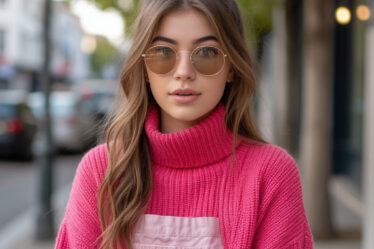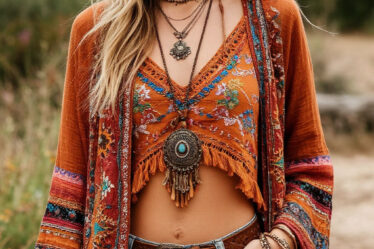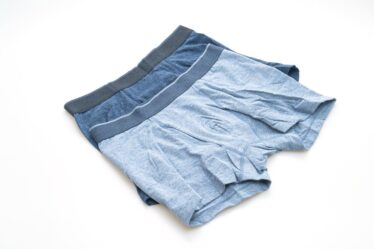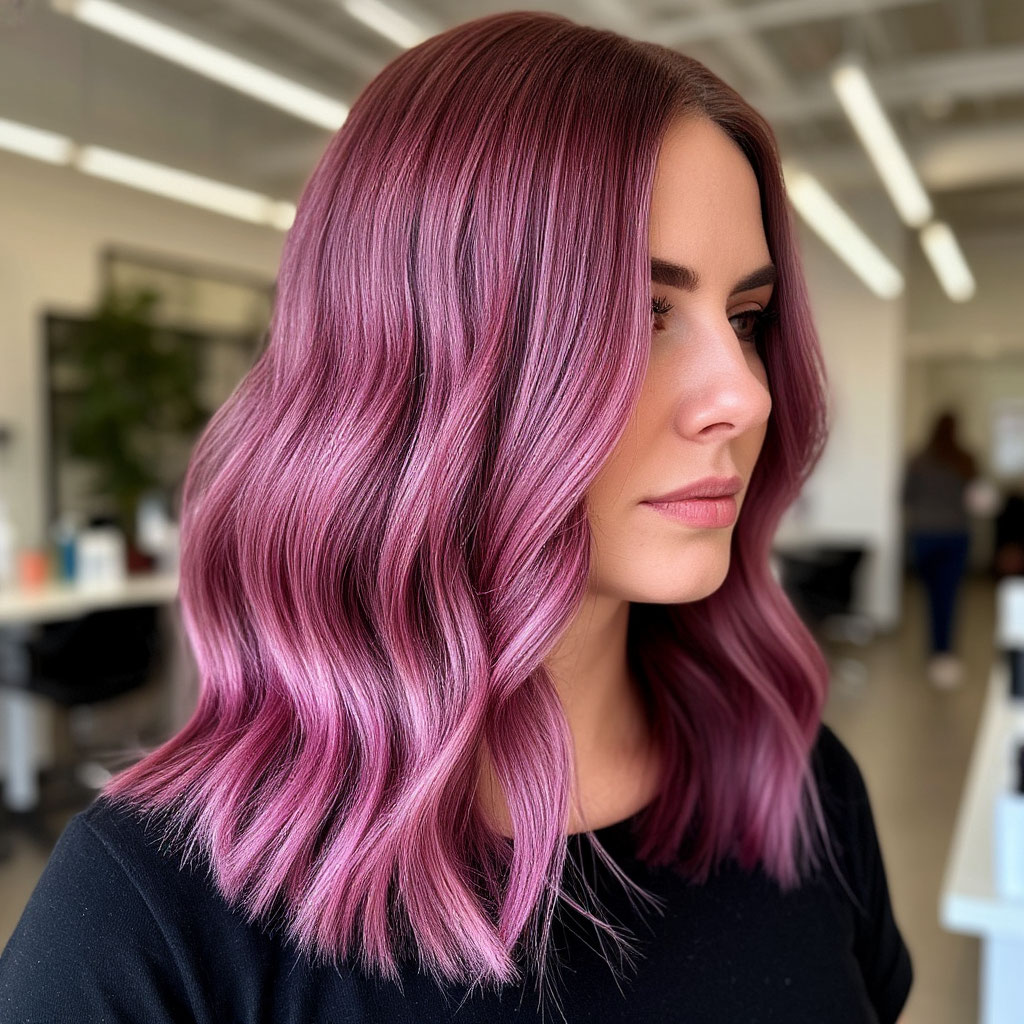
This year’s hair color trends are a mix of soft naturals and bold choices. If you’ve been thinking about changing things up, this season has plenty to offer. The spectrum is wide—warm caramel reflections, silvery finishes, deep reds, and more unexpected pairings.
But 2025 isn’t just about color. New techniques are shifting the focus toward healthy shine and depth. In this guide, we’re looking at the shades getting the most attention, how they’re applied, and how to find a version that actually works for you. And yes, we’ll talk care too—because no one wants their new color fading after a week.
Considering a colour change? Our Beauty Club mini-brochure maps the 2025 hair-color trends, shows how to match shades to your undertone and contrast, and explains modern low-maintenance techniques. You’ll find a printable PDF at the end of this article.
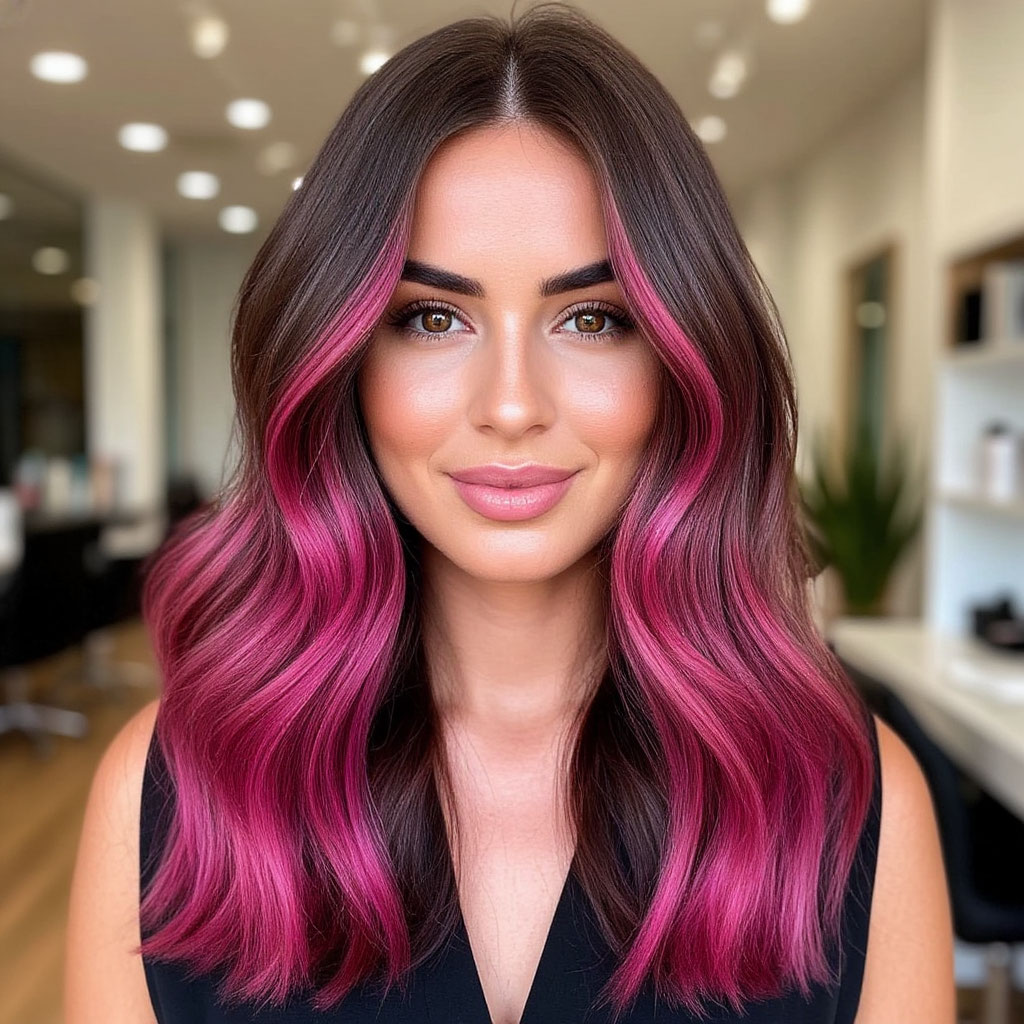
The Shades Everyone’s Talking About
This year’s palette is all about contrast: soft, natural tones meet bolder, futuristic shades. Curious what’s trending? Here’s what’s getting the spotlight in salons.
Naturally-Inspired Hues
The punchy neon colors from previous years are making space for something gentler. Natural-looking tones are leading the way.
- Milky blonde – airy, sheer, and quietly luxe;
- Chestnut with a hint of copper – warm and rich, minus the brassy undertones;
- Ashy light brown – cool and refined, perfect for more polished styles.
These tones work with your natural features, don’t demand constant maintenance, and easily fit into a daily routine.
Color That Stands Out
For those who lean toward something with a little more edge, this season brings moody, unexpected tones that don’t scream, but definitely don’t whisper.
- Dark chocolate with a violet sheen – rich, deep, and dramatic in the right light;
- Metallics in silver and bronze – sleek and confident;
- Classic burgundy – strong and elegant without being too much.
They need skill to get right, but when done well, these colors are magnetic.
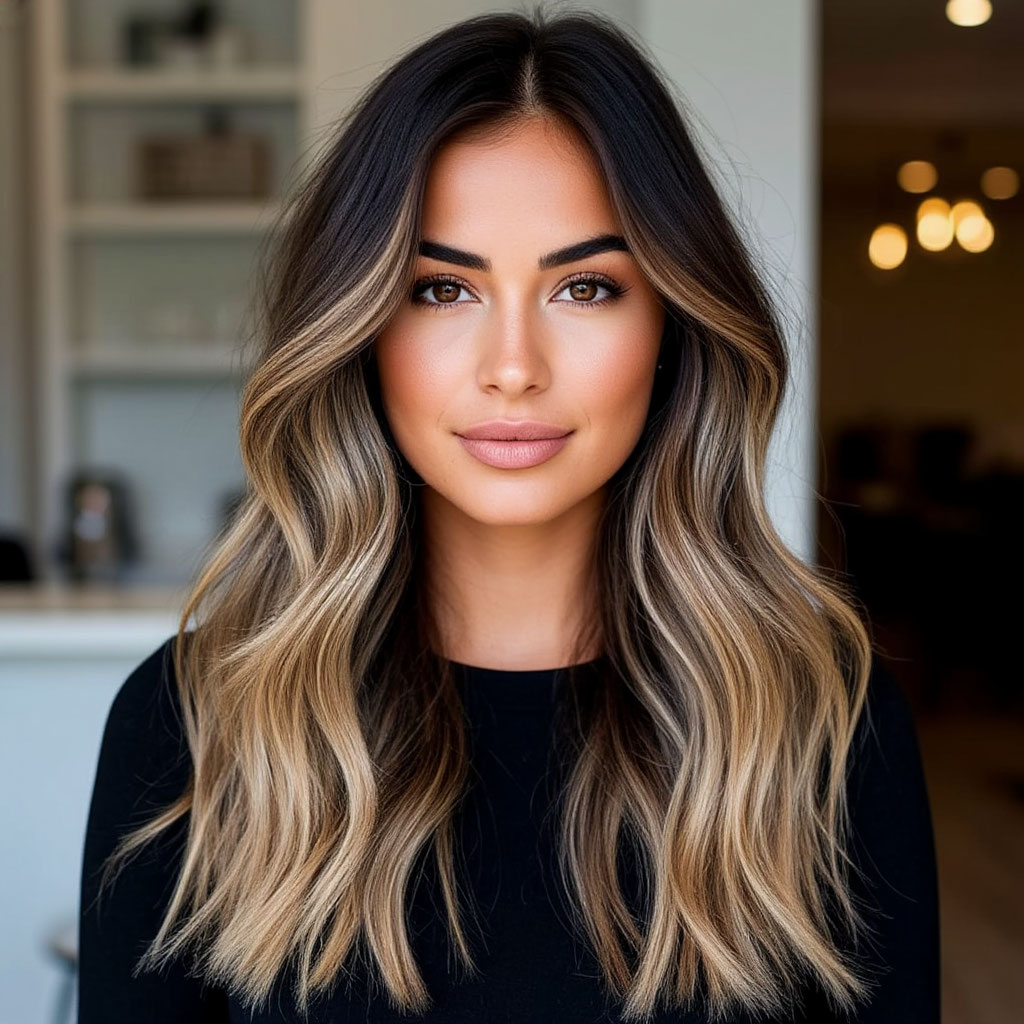
What’s New in Application
Block color’s no longer the default. More clients—and stylists—are choosing layered, multidimensional methods that bring movement and tone variation.
Sunlit Effects: Balayage, Shatush, Ombre 2.0
Techniques that mimic natural light play are still in demand. Balayage remains a favorite for its seamless blends and soft highlights. It’s especially gentle on hair that’s been through a lot and creates effortless-looking dimension.
Shatush is a similar approach—tones are softly blended for a natural shift from root to tip. It gives hair a lifted, fuller appearance.
Ombre 2.0 takes the original idea but makes it cleaner and more refined. Application methods have evolved, and the results now feel more lived-in and intentional.
Statement Looks: Bold Strands and Two-Tone Blends
If subtlety isn’t your thing, there’s room for more graphic, structured styles. Defined streaks or unexpected color pairings can create contrast and bring a look to life. Stylists are playing with placement to make hair part of the whole outfit.
Some popular two-tone duos this year:
- Silver + deep chocolate
- Golden blonde + burgundy
- Icy blue + metallic gray
These styles suit people who love playing with fashion and want their hair to reflect that.
Layered Color: 3D Effects and “Living Color”
One of the most interesting directions this year is multi-layered color that changes depending on light and movement. Stylists build up tone gradually to create depth and dimension—a kind of optical illusion for the hair.
It takes time, technique, and a good understanding of color, but the end result catches light in surprising ways. The hair feels alive.
Of course, any of these techniques should be chosen with your own features in mind. Things like:
- Overall hair health;
- Face shape;
- Style preferences.
It’s not just about chasing trends—it’s about using color to add something personal.
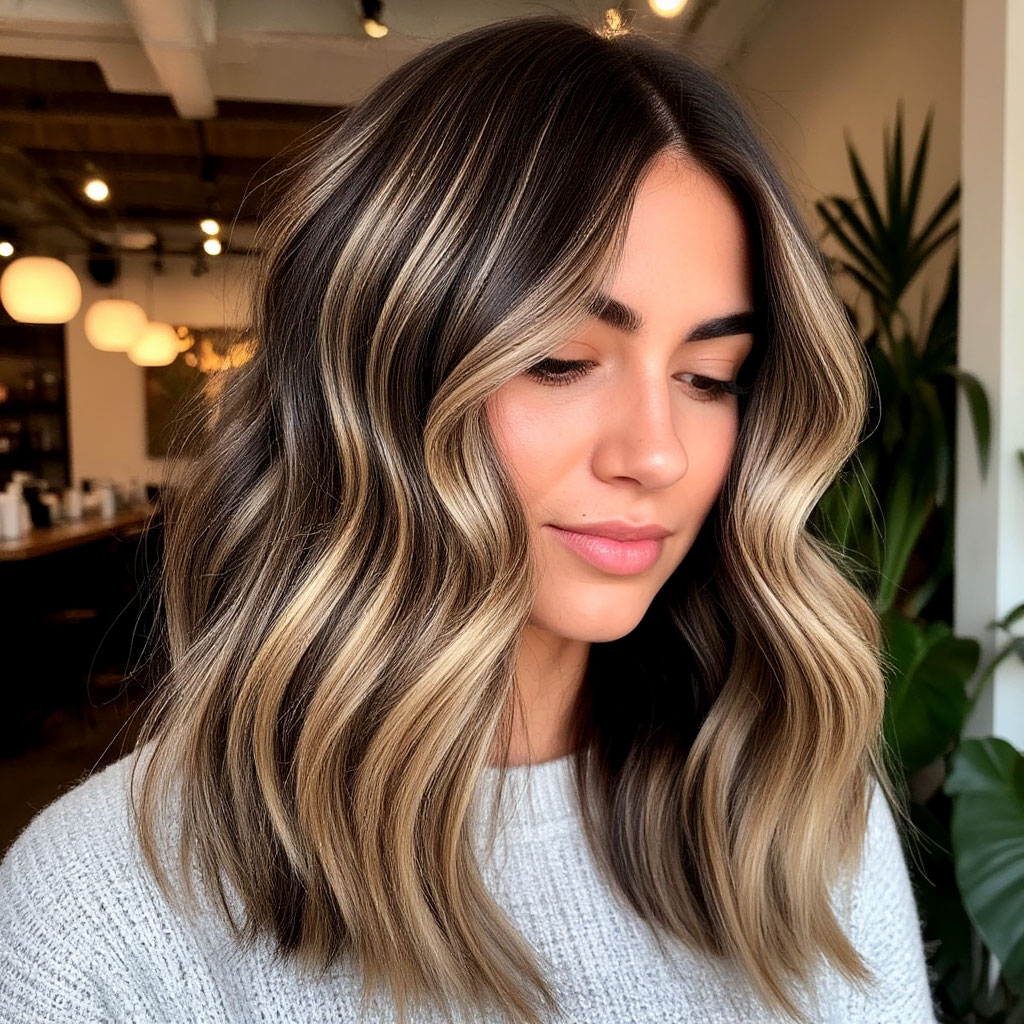
What to Consider Before You Color
Color isn’t one-size-fits-all. What looks amazing on someone else might feel off on you. A few key things can help make the right call.
Skin Tone and Seasonal Types
Knowing your undertone can make a huge difference. People with warm-toned skin—those who tan easily or have peachy undertones—tend to suit golden, honey, or copper hues. If your skin is cool or has a pink undertone, silvery blondes or icy tones usually work better.
Here’s a quick guide:
- Spring: golden honey, soft caramel
- Summer: cool blonde, pearl tones
- Autumn: warm reds, copper, rust
- Winter: deep espresso, jewel tones, cool darks
Matching your tone to the right shade makes everything look more harmonious.
Hair Texture and Condition
Some colors and techniques are tougher on hair than others. Fine or fragile strands benefit from softer, more blended techniques like balayage or shatush. You’ll get dimension without sacrificing strength.
Hair that’s been through a lot might need a recovery period before going lighter or brighter. A stylist can help assess what your hair can handle.
Thicker, resilient hair? That’s your green light to try bolder methods like layering, full-color changes, or intense tone shifts.
Color and Lifestyle
Not every job or routine allows for vivid color. If you work in a traditional office setting, you might prefer classic tones—chocolate brown, soft blonde, cool neutrals. Creative fields usually allow for more expression—shades like violet, pastel blue, or vivid red are easier to pull off.
There’s no need to compromise completely. Even within limits, there’s space for personality: a warm undertone here, a face-framing highlight there.
What matters most is that the color fits both your life and how you want to feel when you look in the mirror.
What Works Best for Your Hair Length?
Color behaves differently depending on how much hair you have to work with. Some techniques shine on longer lengths, others bring life to short styles.
| Hair Length | Best Techniques | Benefits |
|---|---|---|
| Short styles | Light balayage, subtle tips | Adds texture, avoids heaviness |
| Medium lengths | Partial highlights, contouring blends | Frames the face, easy to maintain |
| Long hair | Ombre, living color, multi-tonal work | Room for gradients, strong visual impact |
The trick is working with what you’ve got. The right method can enhance your natural shape and texture, not compete with it.
Keeping It Fresh
Getting the color is only half the journey. Making it last—and keeping it looking fresh—is where the real care begins.
Color-Safe, Pro-Level Products
Investing in good aftercare is key. Look for shampoos and conditioners made for colored hair. They help lock in pigment and maintain softness and shine. Masks and oils from salon-grade lines can help with repair and fade protection.
Even drugstore products can be effective if they’re made with color-treated hair in mind.
DIY Masks and Toners
Between appointments, it’s smart to give your hair a little extra attention. Natural masks with olive oil, egg, or essential oils work well to moisturize and strengthen. Color-depositing toners help refresh faded hues without another round of dye.
It’s not about overcomplicating your routine—it’s about supporting the work your stylist already did.
When to Go Back to the Salon
How often you need a touch-up depends on the technique. For most styles, four to six weeks is the sweet spot. Balayage and ombre are more forgiving—you can stretch that to two or even three months without losing the effect.
Uniform colors like solid blondes tend to need more frequent maintenance, especially when regrowth becomes obvious.
It helps to plan your next visit while you’re still in the chair—your future self will thank you.
Talk With Your Colorist
Regular check-ins aren’t just about timing. Your stylist will notice changes in your hair’s texture, how it’s reacting to treatments, or whether your color needs tweaking. They can suggest product switches or color adjustments as needed.
This kind of collaboration turns coloring into a long-term success—not just a one-off transformation.
A few simple habits go a long way:
- Stick with color-safe products;
- Listen to your stylist’s feedback;
- Adjust routines when your hair changes.
That’s how you keep great color going strong, no matter the shade.
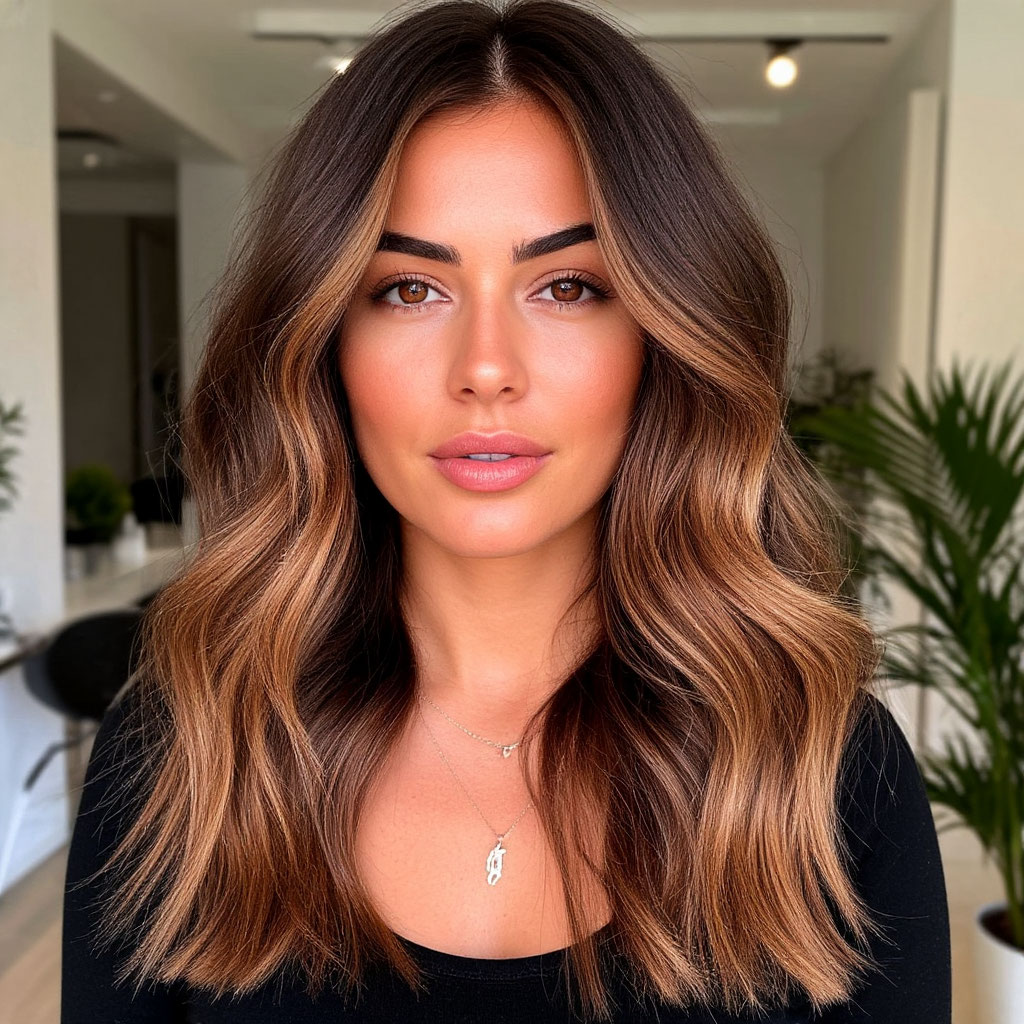
Real-World Inspo
When you’re ready for something new, it helps to see how others are wearing it. From celebrity makeovers to everyday transformations, here are some ideas worth considering.
Styles by Hair Length
For shorter cuts, balayage brings energy and dimension. You don’t need long hair to play with depth. Medium-length styles take well to subtle contouring—highlights placed to shape and soften. Long hair is made for drama: ombre, multi-tone fades, and blended layering all create rich movement.
Try different things until you land on something that clicks. There’s no one perfect formula.
What Celebs Are Doing in 2025
Celebrities have always used hair as a form of self-expression. This year, there’s a noticeable lean toward elegant blends, soft fades, and pastel shades—although solid, bold colors haven’t disappeared.
Whether they’re experimenting with baby pinks or deep mocha tones, they show how color can completely shift how someone presents themselves. These looks filter into street style, influencing what’s showing up in salons everywhere.
Mood Boards and Visual References
If you’ve got a vision in your head but aren’t sure how to explain it, start a mood board. Save photos, clips, and screenshots of colors and styles you like. Share them with your stylist—they’ll help you translate those ideas into a look that makes sense for your hair and your lifestyle.
This visual approach cuts down on confusion and gets you closer to the color you actually want.
Hair color in 2025 isn’t about following every trend—it’s about finding the one that makes you feel more like yourself. Whether you’re keeping things subtle or diving into something vibrant, the right shade can change the way you carry yourself.
Pick a tone that suits your undertone, choose a technique that fits your upkeep, and protect the result with bond care and heat protection.
Download the brochure (PDF): Beauty Club — Hair Color 2025

